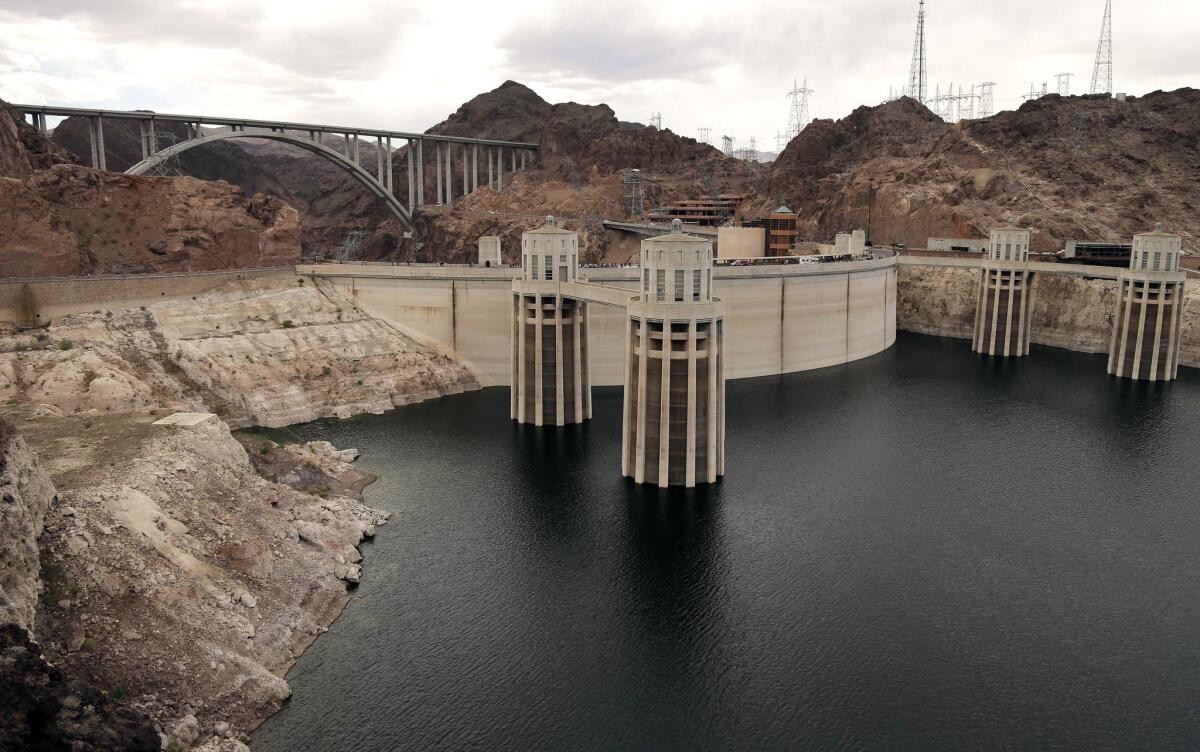Another dry year could be bad news for California

- Share via
Water managers Monday urged Californians to step up their conservation efforts, warning that many parts of the state could face water shortages next year if this winter proves to be another dry one.
“Use these dry conditions as a wake-up call,” said Mark Cowin, director of the state Department of Water Resources.
Officials are not ready to declare a statewide drought. And managers of the Metropolitan Water District of Southern California, the region’s wholesaler of imported water, said they have sufficient supplies in regional storage to avoid mandatory cutbacks for at least another year.
But two dry years in a row have pushed water levels in the state’s biggest reservoirs to below normal. Lake Shasta is at 66% of the average for this time of year and Lake Oroville is at 73% of average.
More than a decade of severe drought in the Colorado River basin — the source of about a quarter of urban Southern California’s supplies — has left both Lake Powell and Lake Mead less than half full. The last two years on the Colorado have been among the driest on record in about a century of measurements.
The last time MWD cut deliveries was 2009, when it imposed higher prices on member agencies for water purchases above certain levels. That reduced demand by about 30%, said Jeffrey Kightlinger, MWD’s general manager. But it has since crept back up by about half that amount.
The widespread use of low-flow indoor fixtures helped drive down per capita water use in Southern California in recent decades. The region uses about the same amount of water it did 20 years ago, despite population growth.
Overall, Los Angeles uses less water than it did four decades ago, even though it has added more than 1 million residents during that time. Per person water use in Los Angeles is 123 gallons a day, compared to 187 gallons in the mid 1980s.
Water districts are increasingly focusing their conservation efforts outdoors, which makes up about half of a typical household’s water use.
The Los Angeles Department of Water and Power has increased rebates for residential lawn removal to $2 a square foot. City restrictions on landscape watering adopted several years ago remain in effect. The regulations limit lawn sprinkling to three days a week and ban hosing down driveways and sidewalks.
MWD recently expanded its conservation incentives to include rebates for the installation of rain barrels and soil moisture sensors. The agency board also approved funding to accelerate efforts to develop local supplies, including recycled water, storm water capture and groundwater cleanup.
“We want our use of water in Southern California to remain flat as we continue to add people,” Kightlinger said. “To do that, we’re going to have to get everybody to use a little bit less every single year.
“What happens if we don’t do that?” he added. “It becomes unsustainable.”
bettina.boxall@latimes.com Twitter: @boxall







